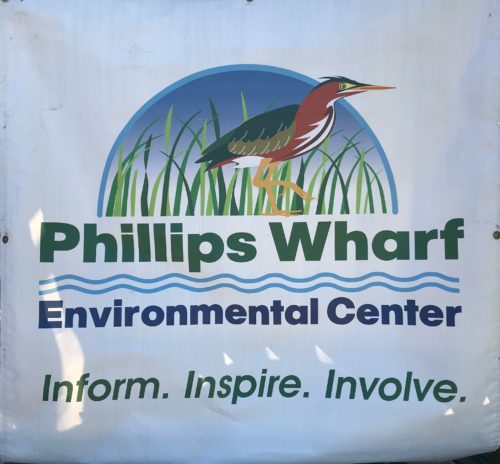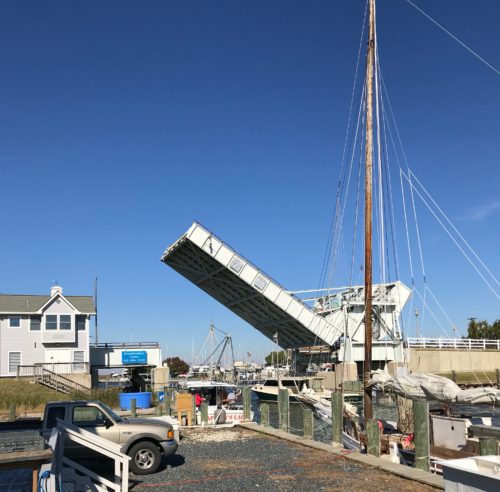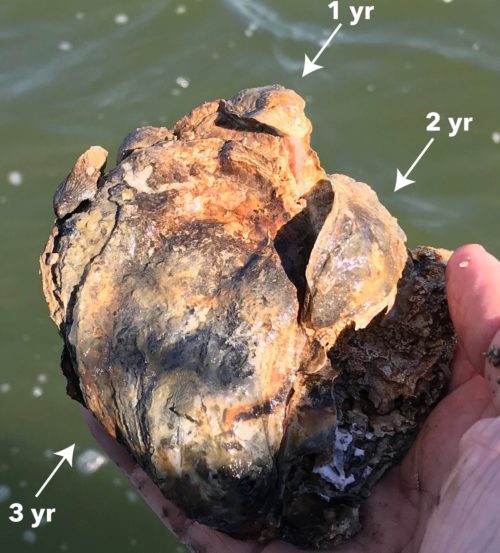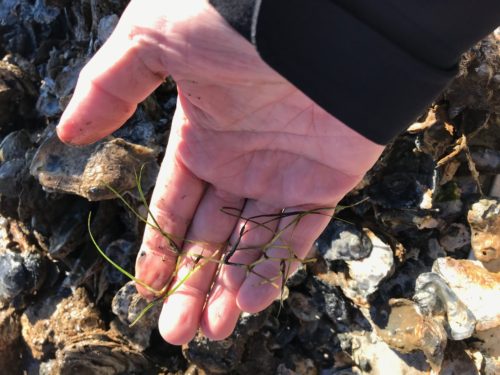A visit to the Harris Creek oyster restoration site with Chesapeake Bay Program colleagues
Bill Dennison ·Kristin Saunders, a University of Maryland Center for Environmental Science at the Chesapeake Bay Program (UMCES@CBP) employee, organizes regular mini-retreats for the Goal Implementation Team chairs and Chesapeake Bay Program leadership. The Goal Implementation Team chairs included Sean Corson (Sustainable Fisheries), Christine Conn (Habitat), James Davis-Martin (Water Quality), Chuck Hunt (Fostering Chesapeake Stewardship), and Dave Goshorn (Enhance Partnering, Leadership and Management). The Communications Workgroup was represented by Deb Klenotic, and the Science Technical Assessment and Reporting team was represented by Scott Phillips and myself. Jim Edward, Acting Director, and Carin Bisland, Associate Director of the Chesapeake Bay Program, attended as well.
On 30 Oct. 2018, we met at the Phillips Wharf Environmental Center on Tilghman Island which is located right on Knapp’s Narrows next to the iconic Tilghman Island bridge. Kelley Phillips Cox gave us an overview of the activities of environmental center and we learned that thousands of school kids and members of the public that visit every year. They are promoting oyster aquaculture, which is a growing but contentious activity. The environmental center has seawater tanks with an assortment of critters, including horseshoe crabs, diamondback terrapins, and even a small sturgeon.


After Sean Corson introduced the Harris Creek restoration project, we were given a tour of the environmental center and then taken out to the Harris Creek Oyster Restoration site aboard a classic Chesapeake Bay workboat. Harris Creek is touted as the largest oyster restoration sanctuary in the world (300+ acres). It is located just inside Tilghman Island near the mouth of the Choptank River. The oysters were reared in the Horn Point Laboratory’s Oyster Hatchery. NOAA’s Chesapeake Bay Office and the Oyster Recovery Partnership were the lead organizations for this large scale restoration project.

Ward Slacum, Executive Director of the Oyster Recovery Partnership led our tour, with sampling from three locations in the Harris Creek Sanctuary. The first was an oyster bed that was not seeded with hatchery oysters. At this site, there were a few large oysters, but it was mostly just oyster shells without live oysters. The second site was a three-year old site, and we saw a dramatic difference, with many small oysters that were one, two or three years old. I was particularly happy to see the abundance of mussels, small blennies, and crabs that came up with the oyster grabs. In addition, aquatic vegetation, widgeon grass (Ruppia maritima), that was reproducing was collected by the grab as well. These associated species that are in the oyster beds will enhance biofiltration, nutrient absorption, and sediment stabilization as well. The third site was planted six years ago at the onset of the program and the oysters at this site included a broad age spectrum.



After lunch at the Character Bridge Restaurant, Kelly Phillips Cox provided us with some aquaculture raised oysters which were delicious. Scott Phillips (no relation) from USGS and Emily Trentacoste from EPA led a discussion about how to provide the science needs of the Chesapeake Bay Program, including prioritizing Goal Team funding, state and federal agency research, and academic research. The science needs include monitoring, research, analysis, and synthesis. A matrix of science providers vs. science needs will be generated by the March biennial meeting.
It was great to be able to visit a large scale oyster restoration project, eat some oysters on the half shell, and talk about Science for Environmental Management with the Chesapeake Bay Program leadership. Pretty much a perfect day in my book.
About the author
Bill Dennison

Dr. Bill Dennison is a Professor of Marine Science and Vice President for Science Application at the University of Maryland Center for Environmental Science.

